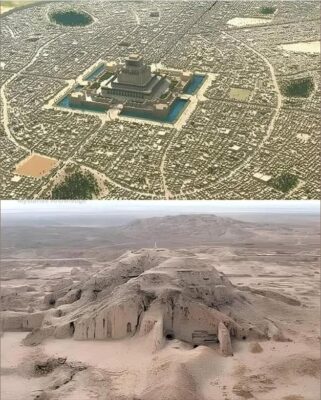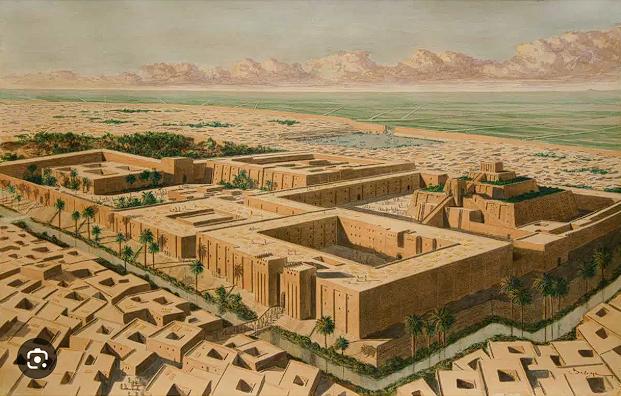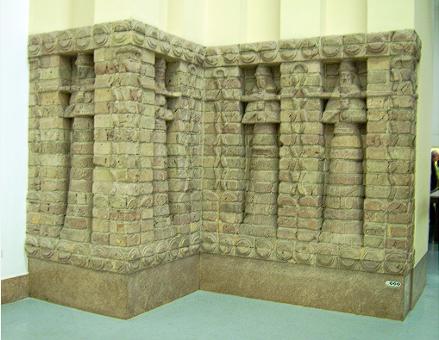The Birth of Uruk: The World’s First City
The Origins of Uruk
Uruk, an ancient Sumerian city located in present-day southern Iraq, is widely regarded as the first true city in human history. Dating back to between 6,500 and 4,000 BC, Uruk emerged during a time of significant social and technological transformation. The development of agriculture, trade, and governance allowed this early civilization to thrive, setting the foundation for urban societies that would follow.
The Discovery of Uruk
The ruins of Uruk were first uncovered in 1849 by British archaeologist William Loftus, who was intrigued by the massive structures buried beneath the desert sands. Over the years, extensive excavations have revealed a complex and sophisticated city, providing historians with an unparalleled glimpse into early human civilization.

The Architectural Marvels of Uruk
The Legendary Walls of Uruk
Uruk’s city walls, famously attributed to the Sumerian king Gilgamesh, were among the most impressive feats of engineering of their time. These massive walls, stretching over six miles, not only provided protection from invaders but also symbolized the power and organization of the Sumerians.
The Temples and Ziggurats
At the heart of Uruk stood the great temples dedicated to the gods, particularly the Eanna temple complex, devoted to Inanna, the goddess of love and war. These early structures evolved into massive ziggurats—stepped pyramidal temples that served as religious and administrative centers, influencing architecture for centuries to come.
The Invention of Writing: A Revolution from Uruk
The Development of Cuneiform
One of Uruk’s most groundbreaking contributions to humanity was the development of writing. Around 3,200 BC, Sumerians in Uruk created cuneiform, one of the earliest known writing systems, which was initially used for record-keeping in trade and governance.
The Importance of Written Records
Cuneiform allowed for the recording of laws, myths, economic transactions, and administrative decisions, laying the groundwork for complex bureaucracies and literature. The Epic of Gilgamesh, one of the world’s oldest surviving literary works, was deeply rooted in Uruk’s culture and legacy.

Economy and Trade: The Lifeblood of Uruk
Agricultural Advancements
Uruk’s success was heavily reliant on agricultural innovations, including irrigation canals that enabled large-scale farming. The city’s strategic location along the Euphrates River allowed its inhabitants to cultivate wheat, barley, and dates, supporting a rapidly growing population.
Trade Networks and Expansion
As Uruk expanded, so did its influence across Mesopotamia. The city established extensive trade networks, exchanging goods such as textiles, metalwork, and pottery with neighboring regions. These interactions helped spread Sumerian culture, technology, and ideas far beyond its borders.
The Society and Culture of Uruk
The Social Hierarchy
Uruk had a well-defined social structure, with kings and priests at the top, followed by merchants, artisans, farmers, and laborers. The ruling class maintained control through religious authority and military power, shaping the city’s governance and economy.
Religious Practices and Mythology
Religion played a central role in Uruk’s daily life. The city was a major center of worship for Inanna, later known as Ishtar. Sumerian myths and rituals originating from Uruk influenced future Mesopotamian civilizations and even aspects of later religious traditions.

The Decline and Legacy of Uruk
The Fall of Uruk
By around 2,000 BC, Uruk began to decline due to environmental changes, shifting trade routes, and the rise of rival cities like Babylon. While it never regained its former dominance, its cultural and technological achievements had already left an enduring mark on history.
Uruk’s Lasting Influence
Uruk’s innovations in architecture, governance, writing, and trade laid the foundation for future civilizations, from the Akkadians and Babylonians to the Greeks and Romans. Today, the ruins of Uruk serve as a reminder of humanity’s first steps toward urbanization and civilization.
Uruk’s story is not just about the past—it is a testament to human ingenuity, resilience, and the timeless quest for progress.

CÁC TIN KHÁC
Mary Walton: The Forgotten Inventor Who Helped Clean Up America’s Cities
Tomb of Queen Nefertari in the Valley of the Queens, Egypt
Discover the Hypostyle Hall of the Temple of Hathor at Dendera
Venus de Losange: Unveiling the Mystery of a 20,000-Year-Old Paleolithic Icon